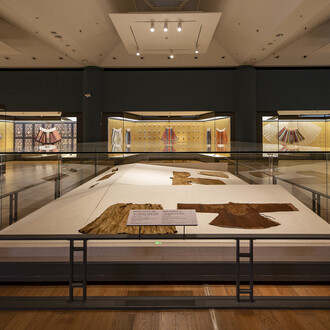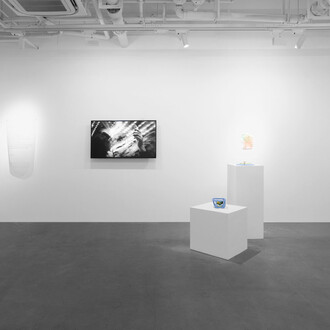Beijing Commune is thrilled to present Wang Luyan’s (b. 1956) solo exhibition Two-dimensional transparent sculpture. The show will feature a series of the artist's recent works centered around the idea of “dimensionality,” demonstrating his enduring experimentation and exploration of doubts, paradoxes, the relationship between ways of knowing and art.
Wang Luyan emerged as an early figure in the history of Chinese avant-garde art before undergoing a decisive shift in the 1980s—one characterized by a persistence in the “isolation of the self.” This pivotal turn marked the beginning of his radical commitment to doubt striving to go beyond the representational, skeptical of both the “visual meaning” in artistic language and the entrenched frameworks of knowing. Wang has then dedicated himself to developing a “‘paradoxical’ iconography” that synthesizes mutually contradictory and negating states within a non-temporal construct. By relentlessly affirming his doubts through art, Wang has forged a mode of knowing uniquely his own.
Appearing as an array of diagrammatic figures, often tools and mechanical products, Wang Luyan’s earlier “‘paradoxical’ iconography” foregrounds how things work. Subjects in these works violate real-world mechanics, functioning, or dysfunctioning, in ways that run against each other. In the new series, however, instead of reading through the gears and chains or the explicitly written instructions, the viewer comes across the “paradox” through their physical movement around the work. As one navigates around each piece, images seen through the transparent acrylic sheets at particular vantage points oppose other perspectival readings—a “paradox” independent of any preexisting knowledge of the imagery.
By introducing the viewer’s physical presence into his “paradox,” Wang Luyan’s new series in this exhibition unfurls his recent conceptual debate on the intricate relationship between the “two-dimensional" and the “three-dimensional.” While a considerable amount of three-dimensional works can be found in Wang’s oeuvre, they often appear as if materialization of his two-dimensional “blueprints”—a metaphorical three-dimensionality that embodies an aspiringly utopian confrontation with reality. In the current body of work designated by the artist as “Two-dimensional Transparent Sculptures,” however, space is employed as the primary medium that constitutes the “paradox.” The tension between the“two-dimensional" and the “three-dimensional” in this case is rather contingent than causal.
Both as conceptual picture planes and with physical scale (ranging from A5 to A2 sizes) that mirrors conventional two-dimensional formats, the marker-drawn images exist as "two-dimensional" in both conceptual and phenomenological terms. This dual nature reflects an enduring concern in Wang Luyan’s works: they are not only preoccupied with intellectuality but also infatuated with a sense of absurdity in life. The modest dimensions of these works, echoing standard paper sizes, also hint at Wang’s hands-on approach to the acrylics, lending the Two-dimensional transparent sculptures series an ambiguous quality that hovers between experimental study and artwork. Reminiscent of modules, the transparent acrylic pieces are assembled by the artist in his endless, personal, experiment, wherein the contingency seems to strive toward a kind of absoluteness: Wang’s unwavering and absolute doubts on ways of knowing.













